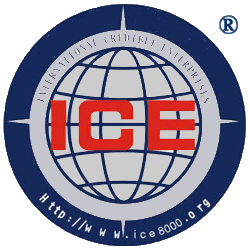Blacklist Introduction-World Credit Organization
Blacklist Introduction
1. Definition of blacklist information
The "ICE8000 International Credit Standard System Blacklist Information Management Standard" stipulates: "The blacklist information mentioned in this standard refers to the facts of untrustworthiness, facts of violation of the bottom line of morality, facts of violation of the bottom line of social responsibility, and warning information, including administrative investigation conclusions Letters, administrative punishment decisions, court judgments, test conclusions, public reports by the media, etc.”
Facts of dishonesty, violation of the bottom line of morality, and bottom line of social responsibility are easy to understand, but warning information is not easy to understand. Warning information refers to all kinds of information that has a warning effect on the public and can arouse public alertness and reduce the chance of the public being deceived. The relevant units and individuals reflected in the warning information do not necessarily violate the law, or the warning information itself does not necessarily indicate or prove that the relevant units and individuals have illegal facts.
Second, sources of blacklist information
(1) State agencies and their departments;
(2) Non-governmental organizations such as various industry self-regulatory organizations;
(3) Various media;
(4) Various third-party organizations such as certification and testing organizations;
(5) Credit information added in accordance with "Internal Exposure Standards of ICE8000 International Credit Standard System", "Public Exposure Standards of ICE8000 International Credit Standard System", and "Joint Exposure Standards of ICE8000 International Credit Standard System (Issuance of Credit Wanted Orders)".
3. The source credibility of blacklist information
The World Credit Organization (WCO) determines the source credibility according to the source of the blacklist information:
(1) The blacklist information directly added by the information source to the ICE8000 information base is at a credible level;
(2) The blacklist information collected and reproduced by the World Credit Organization (WCO), ICE8000 and ICE8000 credit institutions, or the blacklist information that has been verified by the World Credit Organization (WCO) and ICE8000 credit institutions, is a more credible level ;
(3) Blacklist information whose source authenticity has not been verified is contingent.
For contingent level of information, because the authenticity of the source of information has not been verified, there is a greater possibility of inaccuracy. Please pay full attention to the authenticity of the information.
Fourth, the storage period of blacklist information is as follows:
(1) The retention period of internal exposure information, public exposure information, and joint exposure information is seven years, and the retention period is calculated from the date when the responsible person corrects the dishonest behavior or obtains the forgiveness of the victim. If the date of rectification of the untrustworthy conduct is inconsistent with the date of the victim's understanding, the earliest date shall prevail.
(2) The retention period of other types of blacklist information is seven years, calculated from the date of information storage.
V. Check and use of blacklist information
(1) Before August 27, 2012, there were 105,352 records in the blacklist database. Before August 27, 2012, the blacklist information was publicly inquired. After that, due to specific reasons, the blacklist information was no longer publicly inquired. The blacklist information is classified according to its classification, and the scope of dissemination is as follows:
(1) State agencies, social organizations, and news media directly add blacklist information in accordance with the "ICE8000 International Credit Standard System State Organs, News Media, and Social Organization Credit Information Release Standards", and the scope of dissemination is determined by the publisher.
(2) Public exposure information and joint exposure (credit arrest warrant) information are public information, which are publicly disseminated on the Internet.
(3) The title of internally exposed information is public information, which is disclosed in the credit files of the exposed person and the credit responsible person. The content of the internally exposed information is confidential information and shall not be disseminated publicly. It is only for the exposer (or its authorized unit or individual), the exposed person (or its authorized unit or individual), [the established trust organization], and others to make confidentiality commitments units or individuals.
(4) Blacklist information other than the first three items is confidential information, which is only available to the information subject (or its authorized unit or individual) and [established trust organizations].
(2) Regarding the blacklist information, the viewer shall make the following promises and guarantees, and attach the oath of conscience clause:
(1) Guarantee that you are within the scope of dissemination of this information and have the right to read this information;
(2) Promise to abide by the principle of good faith, moral bottom line, and social responsibility bottom line to use this information, and promise not to use this information for illegitimate purposes;
(3) For confidential information, promise to keep the information confidential and ensure that it will not be disseminated to units or individuals who have no right to read this information;
(4) If you violate the above commitments and guarantees, you are willing to bear the corresponding liability for breach of contract according to the ICE8000 international credit standard system.
Welcome to reprint, please indicate the source of the reprint World Credit Organization (WCO)


